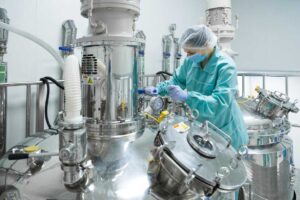In response to the dual challenges of climate change and energy security, the European Union launched the REPowerEU Plan, an ambitious strategy to enhance the production and use of renewable energy, particularly green hydrogen. This plan expands upon the EU Hydrogen Strategy initiated in 2020 and is a key component of the EU’s goal to achieve climate neutrality by 2050.
Green Hydrogen Production and Import Targets
The REPowerEU Plan sets a goal to produce 10 million tonnes of renewable hydrogen annually within the EU by 2030, complemented by an additional 10 million tonnes to be imported. This goal aims to reduce the EU’s dependence on fossil fuels and enhance energy security.
Infrastructure Development
A significant aspect of the plan is the establishment of a robust hydrogen infrastructure. This includes developing extensive hydrogen pipelines and building hydrogen refueling stations across Europe to support the use of hydrogen in transportation and other sectors.
Research and Innovation
The plan allocates substantial funding for research and innovation in hydrogen technologies. This funding supports the development of more efficient electrolyzers, advancements in fuel cell technology, and improvements in hydrogen storage and transportation methods.
Regulatory and Standardization Efforts
To facilitate the hydrogen market’s growth, the EU is introducing comprehensive legislation and standards. The Renewable Energy Directive (RED II and RED III) sets clear criteria for what qualifies as renewable hydrogen and outlines specific targets for its use in various sectors.
International Cooperation
Recognizing the global nature of the energy market, the EU is fostering international partnerships to build a global supply chain for green hydrogen. Countries such as North African nations, Middle Eastern countries, and Australia are key partners in these efforts.
Implementation and Challenges
While the REPowerEU Plan is ambitious, several challenges lie ahead:
- Technological and Economic Feasibility
- The cost of green hydrogen production remains high, and improving the efficiency and cost-effectiveness of electrolysis is critical.
- Market Development
- The hydrogen market is still nascent, requiring significant policy support and market development initiatives to stimulate demand.
- Regulatory Framework
- Establishing a cohesive and comprehensive regulatory framework across all EU member states is crucial for market harmonization and growth.
Conclusion
The REPowerEU Plan signifies the EU’s commitment to leading the global energy transition. By prioritizing green hydrogen, the EU aims to decarbonize its economy, enhance energy security, and position itself as a leader in the renewable energy sector. Despite the challenges, the plan lays a strong foundation for a sustainable energy future, driven by innovation and international collaboration.









